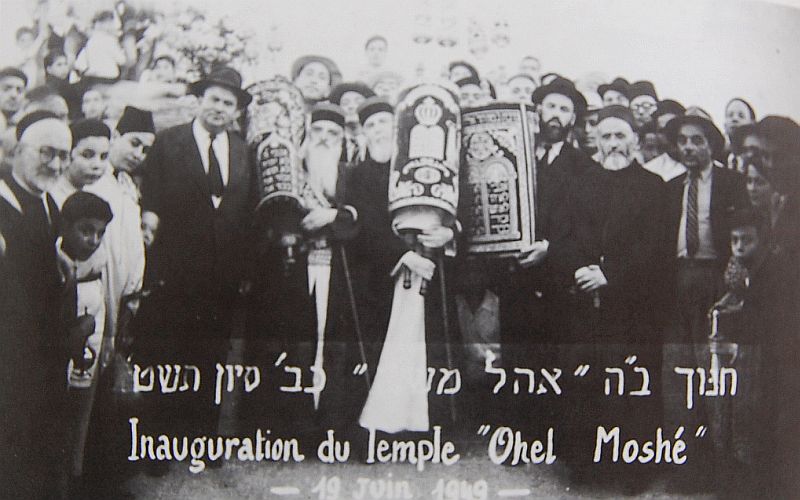On the subject of the Yom Kippur chant “Kol Nidre,” a
Tunisian record sleeve from the 1960s reads, “Every Jew must listen to it with
feeling.” As Yom Kippur is upon us and now that I have digitized Nathan Cohen’s
“Kol Nidre,” I invite all readers of this blog to do the same.
There seems to be something novel about a Tunisian record
label – “En Nour” – remarking on “Kol Nidre” (meaning “All my vows), reminding
Jews to listen to the solemn chant, and distributing such a record in the heart
of Tunis and other cities. But let us recall that as late as the mid-late 1960s,
this was, in many ways, par for the course. When this recording was made, for
instance, Jewish musicians Acher Mizrahi, artist-composer-cantor, and Raoul
Journo, among the pioneers of modern Tunisian song, were still living in
Tunisia.
Nathan Cohen, credited on the record, has appeared before on
this blog. Four years ago I posted his stunning Arabic rendition of
Had Gadya. Cohen,
we recall, was also a frequent collaborator of the Benghazi-born Tunisian artist
Doukha, who passed away in December 2014 and who I wrote about in April 2015. Together
the two formed part of the Tunis-based “
cinq chanteurs” (the five singers),
which included the musician Clement Hayoun. (On a quick side note, Doukha’s
family is posting some incredible black and white and sepia-toned photos from
his early career on
his Facebook page. I strongly encourage you to check out.)
Nathan Cohen’s “Kol Nidre” intrigues for many reasons.
First, it constitutes a rare glimpse into the sonic world of Tunisian Jewish
religious life in the 1960s. Second, it seems that the main chanter on this
recording is not Nathan Cohen but another artist – or rabbi or cantor or combination of all three.
Cohen, it should be noted, does respond throughout the recording and in doing
so, adds a certain spirituality to an already intensely spiritual chant. Third,
we are treated to instrumental accompaniment on music that normally would not
receive such treatment. Fourth and finally, this version of “Kol Nidre” helps
shine a light on the “En Nour” record label on which it was released and which seems
to have specialized in Tunisian Jewish music throughout the early independence
period.
There is more to say but for now I leave you with a taste of
what Tunis sounded like more than half a century ago on the eve of Yom Kippur. Wishing
everyone a good holiday, an easy fast, and a better year.









